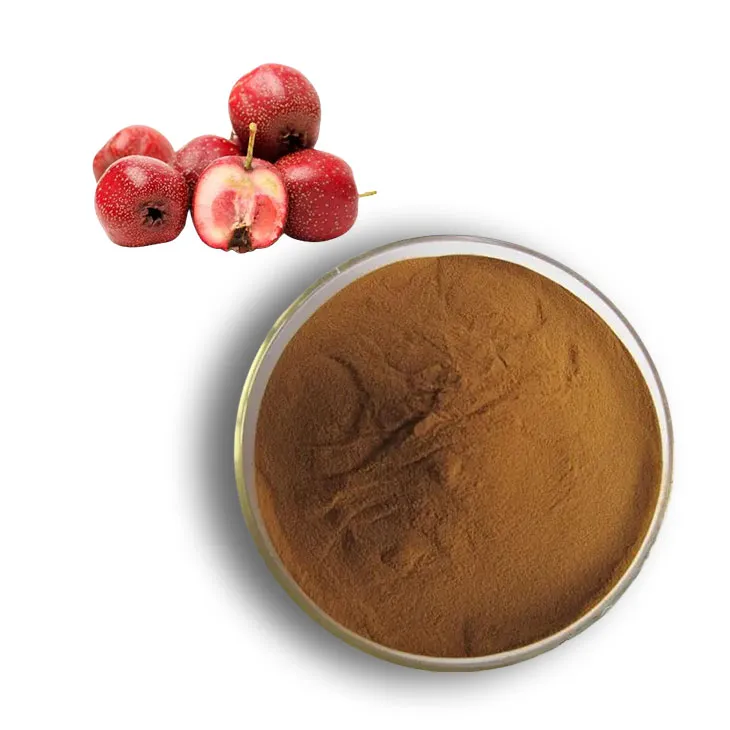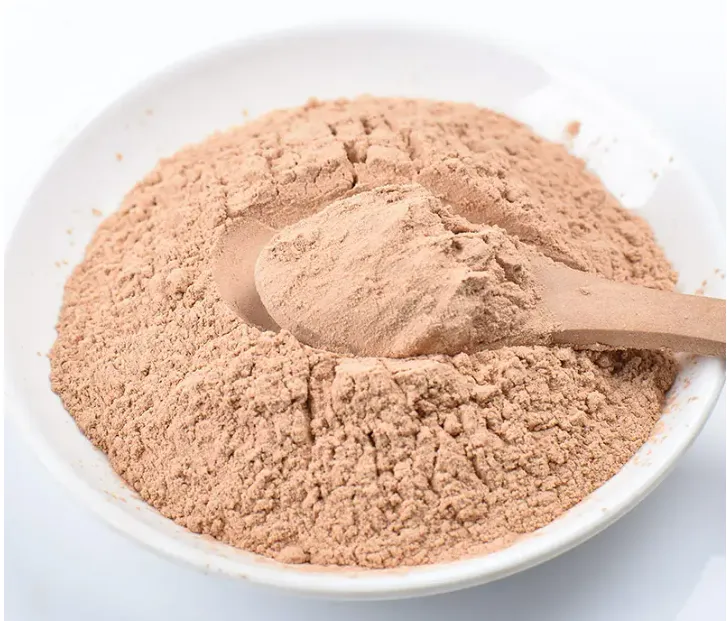- 0086-571-85302990
- sales@greenskybio.com
Hawthorn Extract: Should You Use It for Skin Care?
2024-11-14

Introduction
Skincare is a multi - billion - dollar industry, with consumers constantly on the lookout for new and effective ingredients to incorporate into their routines. Hawthorn Extract has recently emerged as a potential candidate in the world of skincare. But is it really a must - have? This article will delve deep into the properties of Hawthorn Extract, its potential benefits, and the associated risks to help you make an informed decision.

What is Hawthorn Extract?
Hawthorn is a genus of plants in the family Rosaceae. Hawthorn extract is obtained from various parts of the hawthorn plant, such as the berries, leaves, and flowers. It has been used in traditional medicine for centuries, mainly for its cardiovascular benefits. However, its applications are now being explored in other areas, including skincare.

Benefits of Hawthorn Extract for Skin Care
Improved Blood Circulation
One of the key properties of hawthorn extract is its ability to enhance blood circulation. When it comes to the skin, improved blood circulation near the surface can have several positive effects. Better blood flow means that the skin cells receive more oxygen and nutrients. This can result in a more vibrant and healthy - looking complexion. It may also help in reducing puffiness, as proper blood circulation can prevent fluid buildup in the tissues.
Skin Repair
Hawthorn extract contains certain bioactive compounds that could play a role in skin repair. These compounds may stimulate the production of collagen, a protein that is essential for maintaining the skin's elasticity and firmness. As we age, collagen production declines, leading to wrinkles and sagging skin. By promoting collagen synthesis, hawthorn extract may help in reducing the signs of aging. Additionally, it may also aid in the healing of minor skin abrasions and wounds, as it can support the skin's natural regenerative processes.

Potential Risks and Concerns
Allergic Reactions
Like any natural or herbal product, hawthorn extract may cause allergic reactions in some individuals. People with a known allergy to plants in the Rosaceae family are at a higher risk. Symptoms of an allergic reaction may include skin rashes, itching, redness, and swelling. It is important to perform a patch test before using any product containing hawthorn extract on a larger area of the skin. A patch test involves applying a small amount of the product to a small area of skin, usually on the inner forearm, and waiting for 24 - 48 hours to see if any reaction occurs.
Quality and Purity
The quality and purity of hawthorn extract can vary widely depending on the source and the extraction method used. Some products may be contaminated with pesticides, heavy metals, or other impurities. It is crucial to choose a high - quality product from a reputable manufacturer. Look for products that are certified organic or have been tested for purity and quality.
Scientific Research on Hawthorn Extract in Skin Care
While there is some anecdotal evidence suggesting the benefits of hawthorn extract for skincare, scientific research in this area is still in its early stages. Some in - vitro studies (studies conducted in a test tube or laboratory dish) have shown that certain compounds in hawthorn extract can have antioxidant and anti - inflammatory properties. Antioxidants are important for protecting the skin from free - radical damage, which can cause premature aging. Anti - inflammatory properties may help in reducing skin redness and irritation.
However, more in - vivo studies (studies conducted on living organisms) are needed to confirm these findings and to determine the optimal dosage and formulation for skincare applications. Without sufficient scientific evidence, it is difficult to make conclusive statements about the effectiveness of hawthorn extract in skincare.
How to Incorporate Hawthorn Extract into Your Skincare Routine
Topical Products
If you decide to try hawthorn extract for your skin, there are several topical products available in the market. These include creams, serums, and lotions. When choosing a product, make sure to read the label carefully. Look for products that list hawthorn extract as one of the main ingredients and check for any other potentially irritating ingredients. Apply the product as directed, usually once or twice a day, after cleansing your skin.
DIY Skincare
Some people may prefer to make their own DIY skincare products containing hawthorn extract. However, this should be done with caution. If you choose to make your own product, make sure to use high - quality hawthorn extract and follow a reliable recipe. For example, you could make a simple hawthorn extract facial mask by mixing hawthorn extract with other natural ingredients such as honey and yogurt. But keep in mind that homemade products may not have the same level of stability and preservation as commercial products, and there is a risk of bacterial contamination.
Conclusion
In conclusion, hawthorn extract shows promise as a potential ingredient for skincare due to its potential benefits such as improved blood circulation and skin repair. However, there are also risks associated with its use, including allergic reactions and concerns about quality and purity. While scientific research is ongoing, more evidence is needed to fully understand its effectiveness in skincare. If you are considering using hawthorn extract in your skincare routine, it is advisable to consult a dermatologist or a skincare professional first. They can help you assess your skin type and any potential risks, and guide you in choosing the right product or formulation.
FAQ:
Question 1: What are the main benefits of hawthorn extract for skin?
As mentioned, hawthorn extract can potentially improve blood circulation near the skin surface, which may lead to a healthy glow. It also contains compounds that could be helpful in skin repair.
Question 2: Are there any side effects of using hawthorn extract in skincare?
Yes, one of the main concerns is allergic reactions. However, individual reactions may vary, and more research may be needed to fully understand all possible side effects.
Question 3: How does hawthorn extract improve blood circulation in the skin?
The exact mechanism is not fully understood yet. But it is believed that certain components in hawthorn extract interact with the body's physiological processes related to blood vessels near the skin, which in turn may enhance blood circulation.
Question 4: Can everyone use skincare products with hawthorn extract?
No. People with known allergies to hawthorn or related plants should avoid it. Also, those with very sensitive skin may need to be cautious and do a patch test before using products containing hawthorn extract.
Question 5: Is there enough scientific evidence to support the use of hawthorn extract in skincare?
Currently, there is some scientific research indicating its potential benefits, but more comprehensive and in - depth studies are still needed. Some studies have shown its effects on blood circulation and skin repair components, but the overall evidence is not yet conclusive.
Related literature
- The Effects of Hawthorn Extract on Skin Health: A Review"
- "Hawthorn in Cosmetics: Potential and Limitations"
- "Scientific Insights into Hawthorn Extract for Skin - Care Applications"
- ▶ Hesperidin
- ▶ citrus bioflavonoids
- ▶ plant extract
- ▶ lycopene
- ▶ Diosmin
- ▶ Grape seed extract
- ▶ Sea buckthorn Juice Powder
- ▶ Beetroot powder
- ▶ Hops Extract
- ▶ Artichoke Extract
- ▶ Reishi mushroom extract
- ▶ Astaxanthin
- ▶ Green Tea Extract
- ▶ Curcumin Extract
- ▶ Horse Chestnut Extract
- ▶ Other Problems
- ▶ Boswellia Serrata Extract
- ▶ Resveratrol Extract
- ▶ Marigold Extract
- ▶ Grape Leaf Extract
- ▶ blog3
-
High purity olive leaf extract
2024-11-14
-
Lavender oil extraction method
2024-11-14
-
100% organic virgin sea buckthorn fruit oil
2024-11-14
-
Lotus leaf extract powder factory in China
2024-11-14
-
China aged garlic extract supplier
2024-11-14
-
Deer antler extract powder manufacturer
2024-11-14
-
Saw palmetto extract vs whole herb
2024-11-14
-
Yohimbine Bark Extract
2024-11-14
-
Alfalfa Meal
2024-11-14
-
Beta Carotene
2024-11-14
-
Yellow Pine Extract
2024-11-14
-
Ginseng Root Extract
2024-11-14
-
Lavender Extract
2024-11-14
-
Centella Asiatica Extract
2024-11-14
-
Soy Extract
2024-11-14
-
Phyllanthus Emblica Extract
2024-11-14
-
Beetroot juice Powder
2024-11-14





















